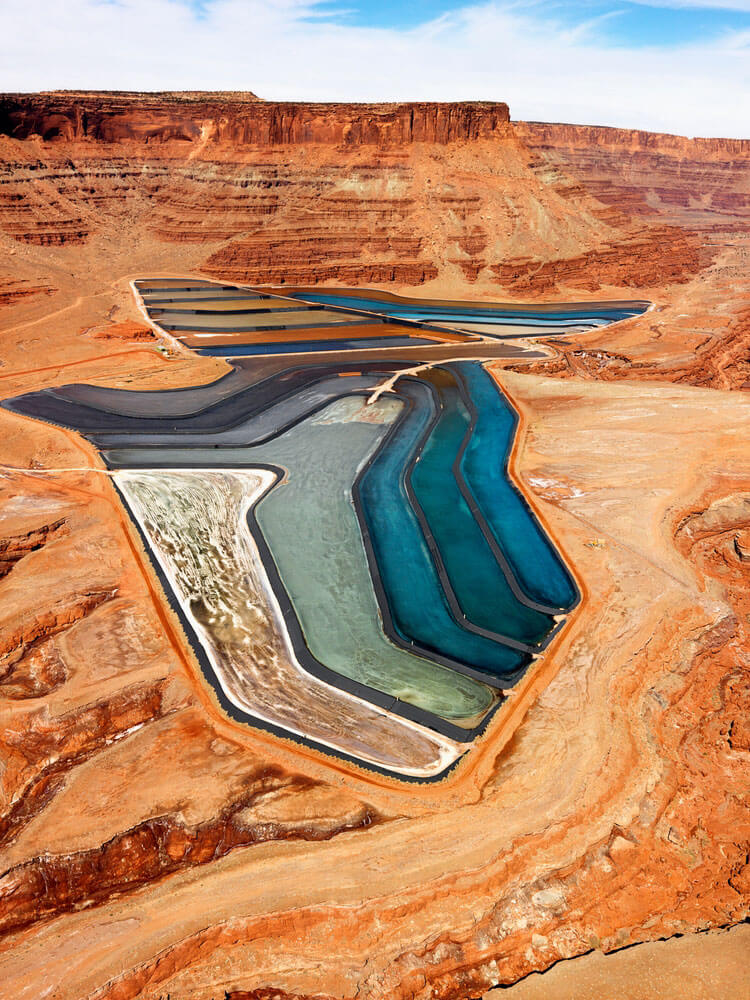Forward-learning companies in the energy and utilities sector have adopted drone technology across various industrial operations. At the 2024 Aerial Evolution Association of Canada Conference and Expo, an expert panel from leading Canadian organizations Hydro-Quebec, Syncrude Canada Ltd. and Suncor Energy shared their approaches to leveraging drones and emerging technologies. This article explores how these industry leaders are implementing and scaling their drone programs for increased efficiency and safety.
Hydro-Quebec’s Robotics Program: Pioneering Utility Inspections
Hydro-Quebec initiated its drone program in 2019 and has since expanded to include approximately 120 trained pilots and 120 drones, conducting over 2,300 missions annually. Hydro-Quebec’s drone operations cover a vast infrastructure, including substations, high-tension lines and distribution networks. The company now utilizes drones for various purposes has expanded its offerings and intends to lean into other emerging technologies in the future.
Infrastructure Inspections
Hydro-Quebec’s drone operations cover a vast infrastructure, including substations, high-tension lines and distribution networks.
Specialized Operations
Felipe Contréras Lara, a Hydro-Quebec project engineer, highlighted that his team uses drones not only for inspections but also for specialized operations like confined space inspections inside dams and localized vegetation control. With regard to the latter use case, Lara said that drones with multispectral cameras for vegetation management along power line corridors significantly reduce herbicide use and improve maintenance efficiency.
Custom Robotic Solutions
Building on the success its drone program, Hydro-Quebec has also incorporated the innovative use of robotics with its drones, for holistic infrastructure inspection and maintenance of assets. The company has custom-developed specialized robotic solutions. “We’re not just using off-the-shelf drones,” Lara explained. “Our team is developing specialized robotic solutions for unique challenges in our operations.” For example, the Hydro-Quebec developed a crawler robot for inspecting the interior of dams, which can navigate tight spaces and collect crucial data on structural integrity.
Lara also highlighted their work on a drone capable of de-icing power lines. “This drone can fly close to power lines and spray de-icing fluid, reducing the need for dangerous manual interventions during winter months,” Lara said. These innovations not only improve safety but also significantly reduce downtime and maintenance costs.
The Secret to Success
Lara attributes his program’s success to “putting drone technology in the hands of employees who are doing the actual work.” This helps promote the technology and discover new use cases. He also highlighted the significance of showcasing “home runs” or quick, impactful successes to gain support for the program. In one case, his team had a hotspot inspection of a 735 kV transmission line that used to take 3 hours and require de-energizing the line. “Now, we’re back home in 30 minutes,” he said.
He also lauded his company’s centralized approach to data management and processing. ”We have a specific team that is responsible for data management,” Lara explained. “They receive all the data from the field and process it.” Centralization allows for consistent data quality and efficient processing across Hydro-Quebec’s sprawling operations.
Future Developments
As for what’s next, Hydro-Quebec is experimenting with underwater drones for inspecting hydroelectric facilities. “These underwater drones allow us to inspect areas of dams and turbines that were previously difficult or dangerous to access,” Lara explained.
Hydro-Quebec also plans to seize on advancements in sensor technology. “We’re seeing rapid improvements in sensors, particularly in thermal and multispectral imaging,” Lara explained. “These advancements will allow us to gather even more detailed and accurate data during inspections.”

Syncrude Canada: Enhancing Industrial Inspections with Drones
Syncrude Canada Ltd, primarily uses drones to improve its industrial inspection processes, but also found that drones enable environmental compliance as well. With early beyond visual line of sight (BVLOS) approvals and an eye towards data integration and AI, Syncrude is all in on drones.
Coker Unit Inspections
The use of drones in the company’s coker units has vastly improved its business, as the quality of inspections remains unsurpassed. Drones allow access to areas that were previously difficult or impossible to reach. Drone tech has also enhanced safety by reducing the need for workers to enter confined spaces. Senior Technologist Darren Burgardt said, “What you don’t see in the numbers, and the other part which we can never quantify, is we’re not putting anybody inside of a confined space. And that’s huge.”
3D Modeling with LiDAR
The company also uses drones equipped with LiDAR technology to create detailed 3D models of its facilities. According to Burgardt, these models have proven incredibly valuable for planning maintenance activities and identifying potential issues before they become critical.
Tailings Pond Management
Syncrude further employs drones for tailings pond management. Highlighting this particular use case, Burgardt said, ”Using drones equipped with specialized sensors to monitor our tailings ponds allows us to assess water quality and detect any potential issues much more efficiently than traditional methods,” he said.
Regulatory Wins
Getting the required regulatory approvals to reap these all of these benefits was crucial to scaling up. Burgardt shared, ”Getting beyond visual line of sight (BVLOS) approvals has been a game-changer for us. It allows us to inspect large areas of our operations more efficiently, but it also comes with additional regulatory requirements that we need to navigate carefully,” he said.
Data Integration and Future Plans
As for all of the data collected, Syncrude integrates it with existing asset management systems. Its goal of future seamless integration will enable more comprehensive analysis for predictive maintenance efforts.
Speaking of the future, Burgardt said that Syncrude recognizes the growing importance of artificial intelligence and machine learning in drone operations. As AI and machine learning algorithms become increasingly sophisticated, the company is exploring how these technologies can help it analyze drone-collected data more efficiently and identify potential issues before they become critical.

Suncor Energy: Hybrid and Centralized Drone Operations
Another early tech adopter, Suncor Energy initiated its drone efforts in 2020. In just two years, the company grew its operations across extensive geography, deployed assets coast to coast in Canada and the United States and recorded over 18,000 drone missions across its sites. Today, the company works with 32 external vendors for drone operations.
Diverse Applications
Suncor now uses drones not only for industrial inspections but also for wildlife surveys. Genevieve Dacambra, the Manager Aviation Ops at Suncor, highlighted this use case. “Drones have revolutionized how we conduct wildlife surveys for regulatory compliance,” she lauded. “We can cover large areas quickly and with minimal disturbance to the animals.”
Internal Pilot Program
Tedman Jess, Senior Aviation Advisor for drones at Suncor, stressed the importance of educating employees about the existence and capabilities of drone programs within large organizations. The company has taken this to heart. It recently launched its own internal pilot program to train 48 employees to become advanced drone pilots. By internalizing part of the program, Suncor aims to leverage the expertise of its field personnel by providing them with drones to augment their work. According to Jess, this approach should allow the company to maximize the benefits of drone technology across its diverse operations.
Hybrid Operational Model
Both Jess and Dacambra believe their hybrid model, which combines internal pilots using owned drones and leased equipment with third-party services, has maximized flexibility and expertise in the company. Building relationships with preferred service providers on a multi-year basis, they said, has also benefitted the safe and quick growth of their programs.
Data Management and Regulatory Compliance
With rapidly growing programs comes reams of data. Proper data management remains crucial to derive meaningful insights and make informed decisions based on massive amounts of data collected by drones daily. For this reason, the company has invested heavily in data management infrastructure. “We’ve built a robust system to handle the massive amounts of data our drones collect daily,” Jess said.
Suncor also built up its own internal team to stay abreast of evolving regulations. “The regulatory landscape for drone operations is continually changing,” Dacambra said. “We’ve dedicated resources to ensure we’re not only compliant but also actively engaged in shaping future regulations,” she continued.
Future Initiatives
As for what’s next, Suncor is exploring the use of drones for quick and safe situation emergency response assessment in the event of an incident or accident. The company is also closely watching developments in autonomous drone technology. “The ability to have drones perform routine inspections without human intervention could be a game-changer for our industry,” Dacambra noted.
Jess added that Suncor is also working on solutions to allow its drones to operate safely even in GPS-challenged environments and assessing the potential of drone swarms for large-scale operations. “The concept of using multiple drones working in coordination could significantly enhance our inspection and monitoring capabilities,” he said.
Pushing Boundaries With Robotics and Drones in Industrial Inspections
As these three energy and utilities sector companies have shown, industrial drone programs will continue to reap significant benefits in terms of efficiency, safety and cost savings. The experiences shared by these industry leaders provide valuable insights for other organizations looking to implement or expand their own drone initiatives. Dacambra said it best: “As we push the boundaries of what’s possible with drone and robotics technology, we’re not only improving our operations but also setting new standards for safety and efficiency in our industry.”
Future Trends: Emerging Technologies in Industrial Drone Programs
These emerging technologies could significantly enhance inspection and monitoring capabilities for the energy and utilities sector:
- Autonomous drones for routine inspections
- Advancements in sensor technology, particularly thermal and multispectral imaging
- Integration of artificial intelligence and machine learning for data analysis
- Potential use of drone swarms for large-scale operations.
Tips for building a drone program at an industrial scale:
- Education and promotion within the organization
- Leveraging vendors to test and prove concepts
- Empowering employees by putting drone technology in their hands
- Demonstrating quick wins to gain support for the program
- Employing hybrid approaches combining owned drones, leased equipment, and third-party services
- Building relationships with preferred service providers on a multi-year basis helps establish programs and realize benefits faster in a safe manner.

